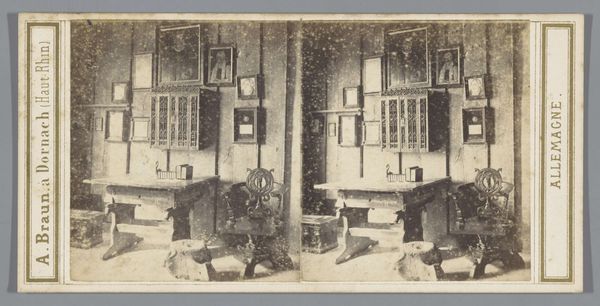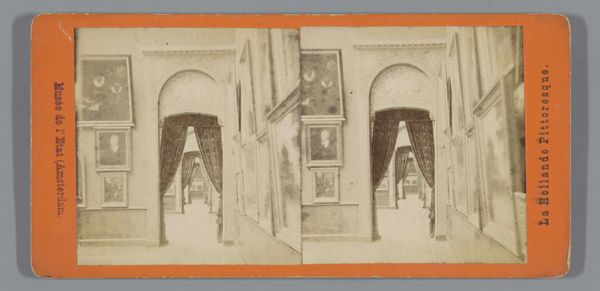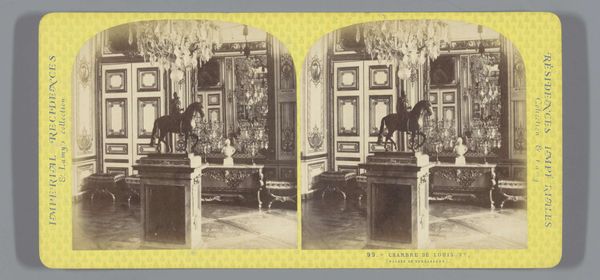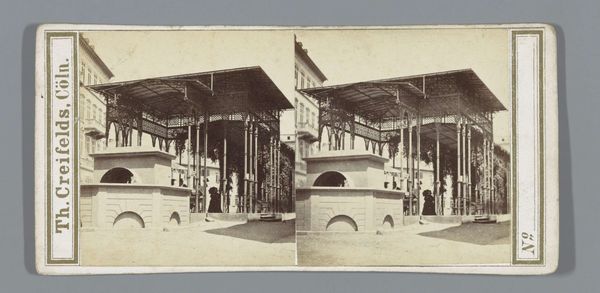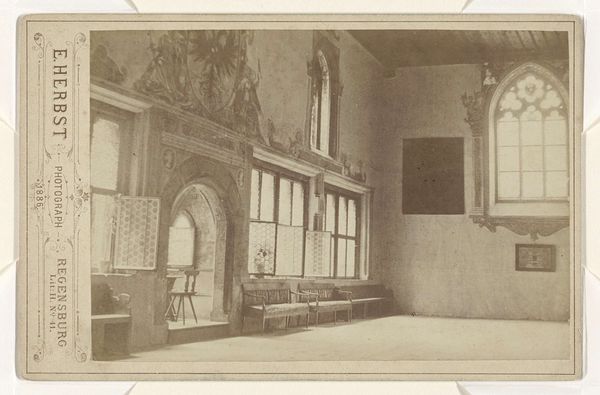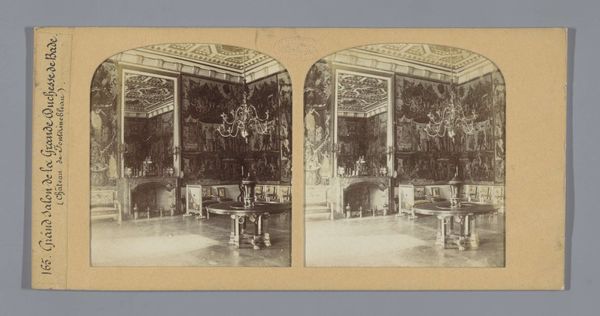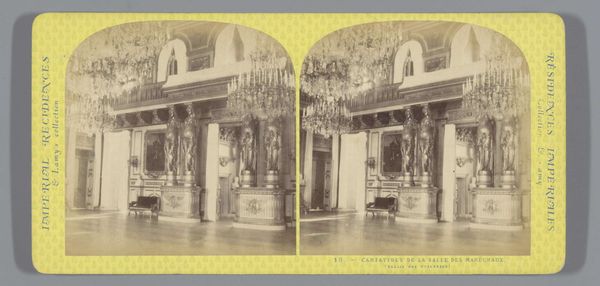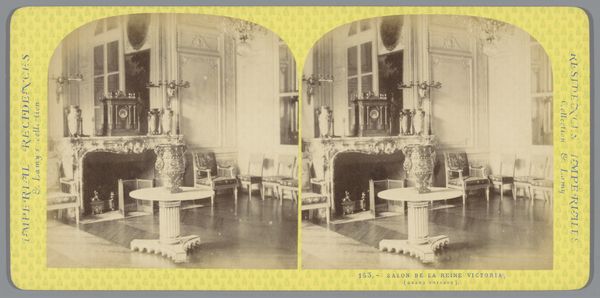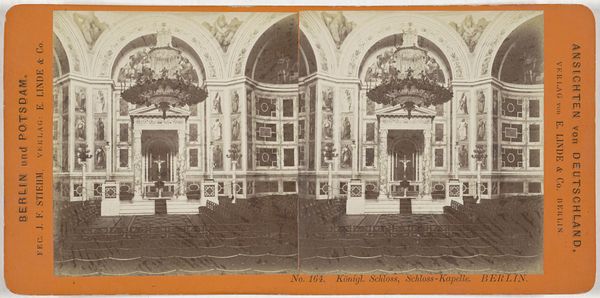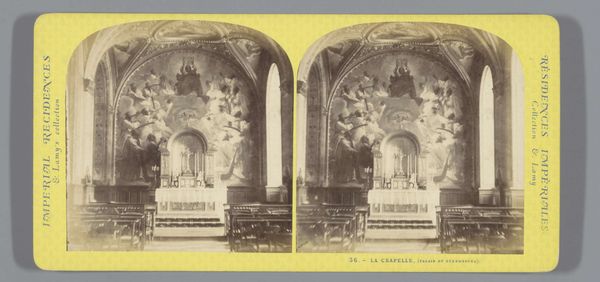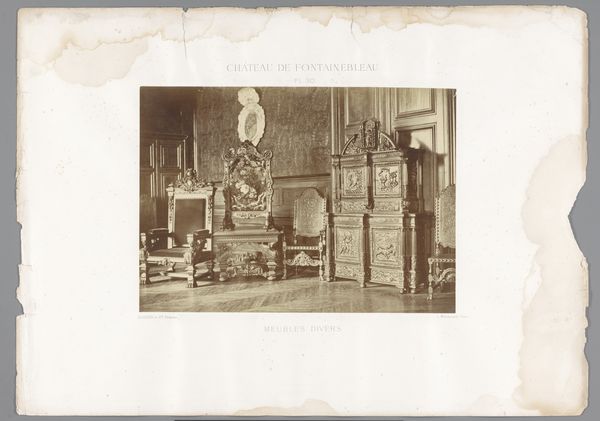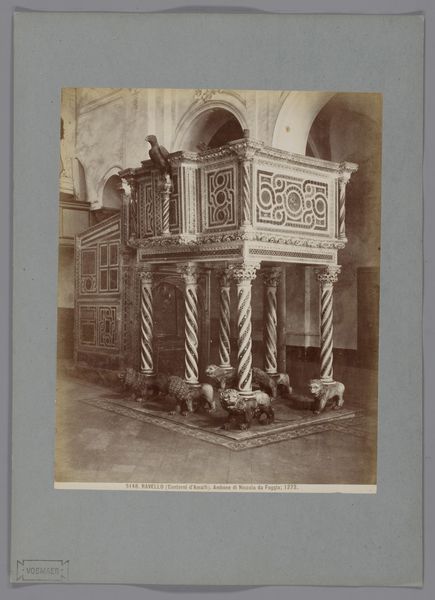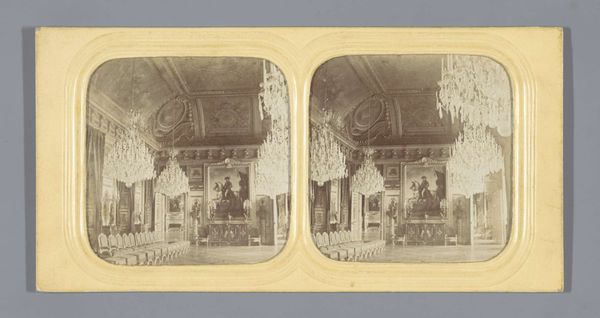
Zaal 147, gewijd aan de Middeleeuwen, in het Rijksmuseum, Amsterdam 1885 - 1909
0:00
0:00
print, photography, gelatin-silver-print
#
medieval
# print
#
photography
#
gelatin-silver-print
Dimensions: height 87 mm, width 178 mm
Copyright: Rijks Museum: Open Domain
Curator: This stereograph, likely a gelatin-silver print, captures “Zaal 147, gewijd aan de Middeleeuwen, in het Rijksmuseum, Amsterdam”—Room 147, dedicated to the Middle Ages in the Rijksmuseum, Amsterdam. Andreas Theodorus Rooswinkel took it sometime between 1885 and 1909. Editor: It's fascinating. Immediately, I'm struck by the level of crafted detail. The cabinets, the walls—everything feels carefully constructed, deliberately displayed for observation, consumption. There's a very deliberate labor behind every visible component. Curator: Indeed. These kinds of photographic records are important for understanding the presentation and public perception of the Medieval at the turn of the century. The Rijksmuseum itself was founded only a few years before this photograph was taken; it had the mission of educating the public on national history. Editor: Which it accomplished by curating specific objects and presenting them in specific ways—ways that naturalize the cultural significance of objects divorced from their original contexts, might I add. You've got wooden cabinetry elevated into displays; is that a reliquary behind the desk? It feels almost sacred, but removed. Curator: Precisely. These are devotional objects recontextualized for public consumption. They were meant to foster a sense of national pride and connection to a shared past, but also to legitimize the institution as the keeper of collective history and good taste. Editor: And let's not ignore the stereograph format itself. Mass produced, readily available; images like this made the rarefied air of the museum accessible to a broader public, even at home. Reproducing craft for the masses. Curator: An early form of democratizing art access, you could say. Though, certainly filtered through the lens, literally and figuratively, of the museum's agenda and display strategy. It begs the question: Whose version of the Middle Ages are we really seeing? Editor: Perhaps not the reality of the laboring artisans who produced it, that's for sure! Even photography isn't purely objective, the light, depth of field. This is still artifice. This is still built, presented in its packaging, to give the feeling that the historical age is very sanitized and controlled. Curator: Right. So it offers insights into the socio-political agenda of museum culture itself during that time more than the actual craftsmanship of the period objects on display. Editor: Exactly. Looking closely at these gelatin prints, that production itself adds yet another layer of crafted meaning! The materials themselves were being put to work. Curator: Very interesting, how different angles and points of access allow for layered appreciation and, potentially, interrogation. Editor: The power of materiality to tell another story, precisely.
Comments
No comments
Be the first to comment and join the conversation on the ultimate creative platform.
